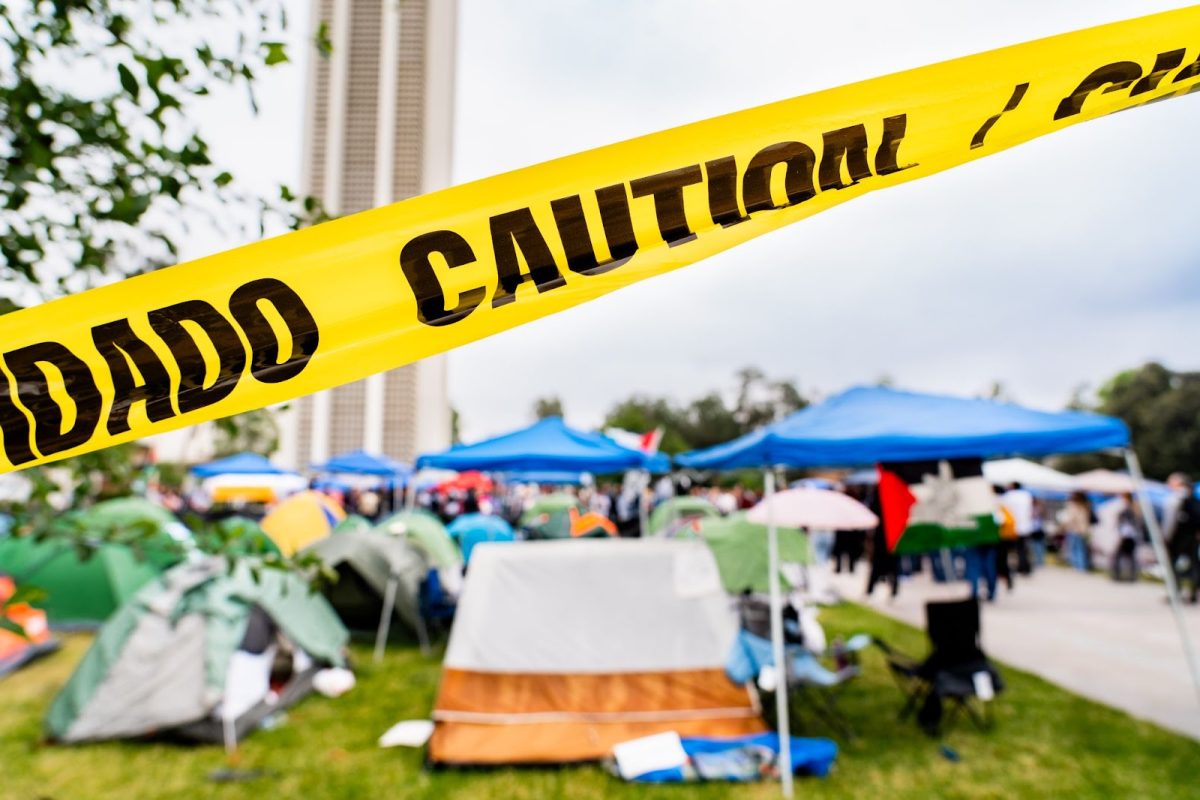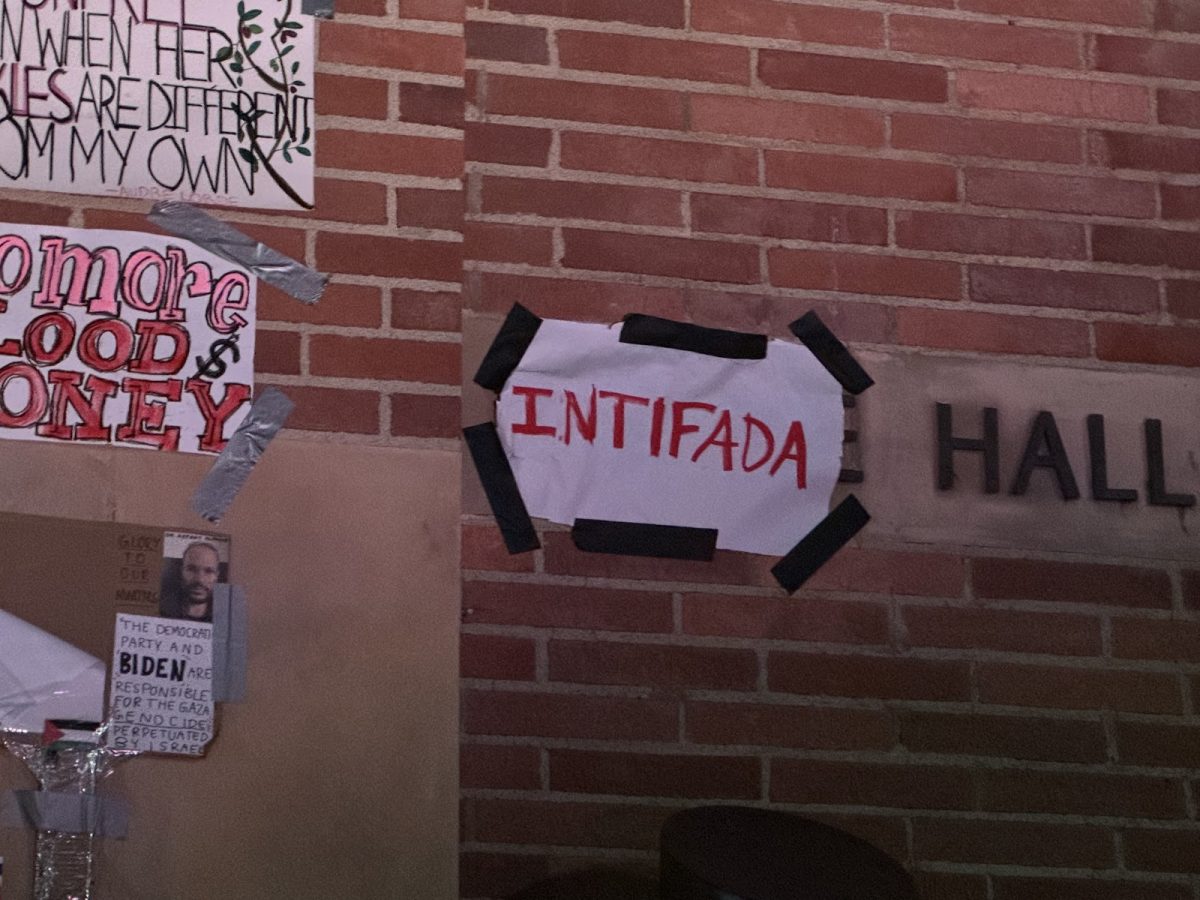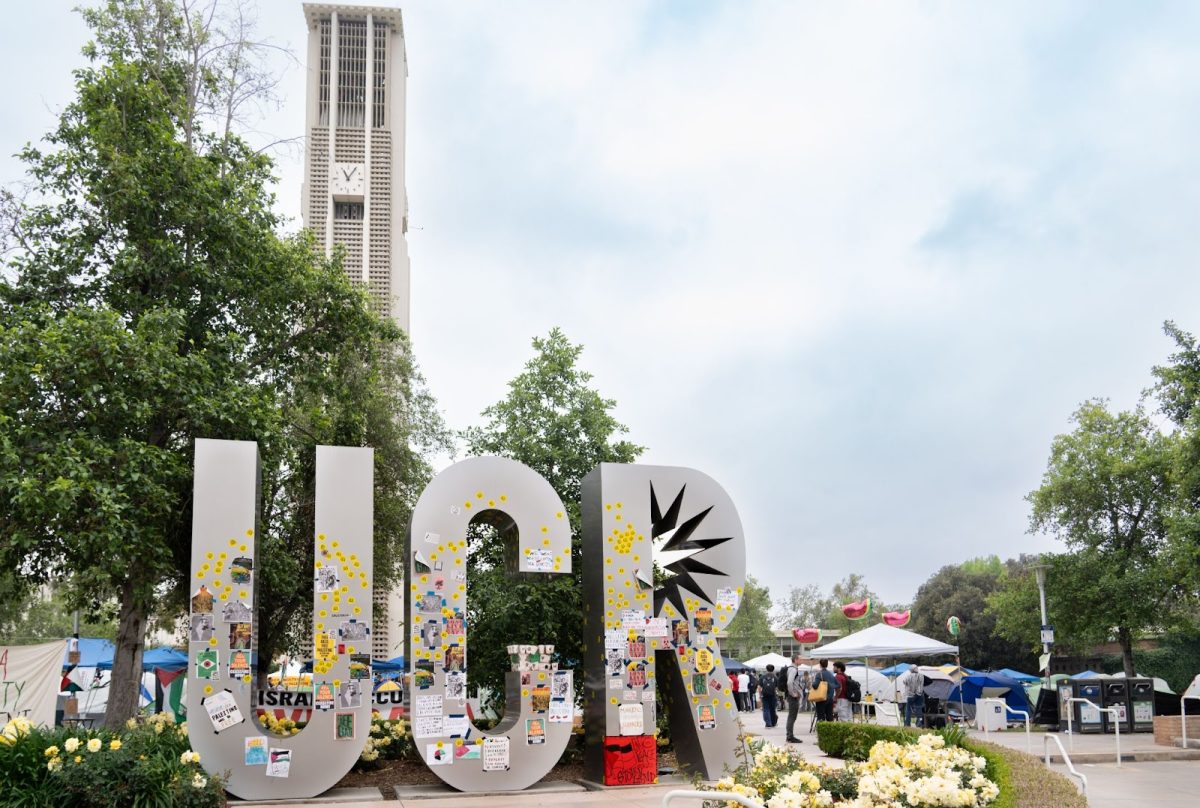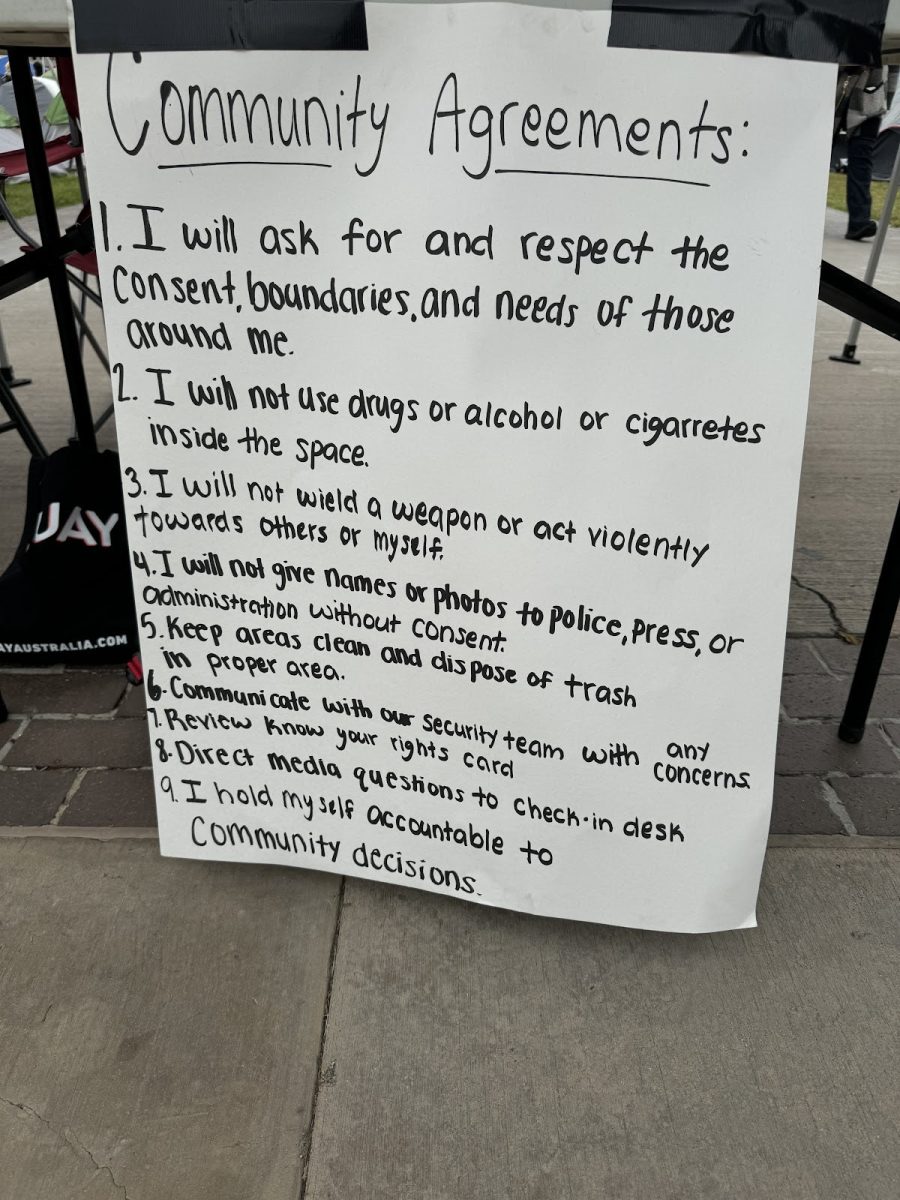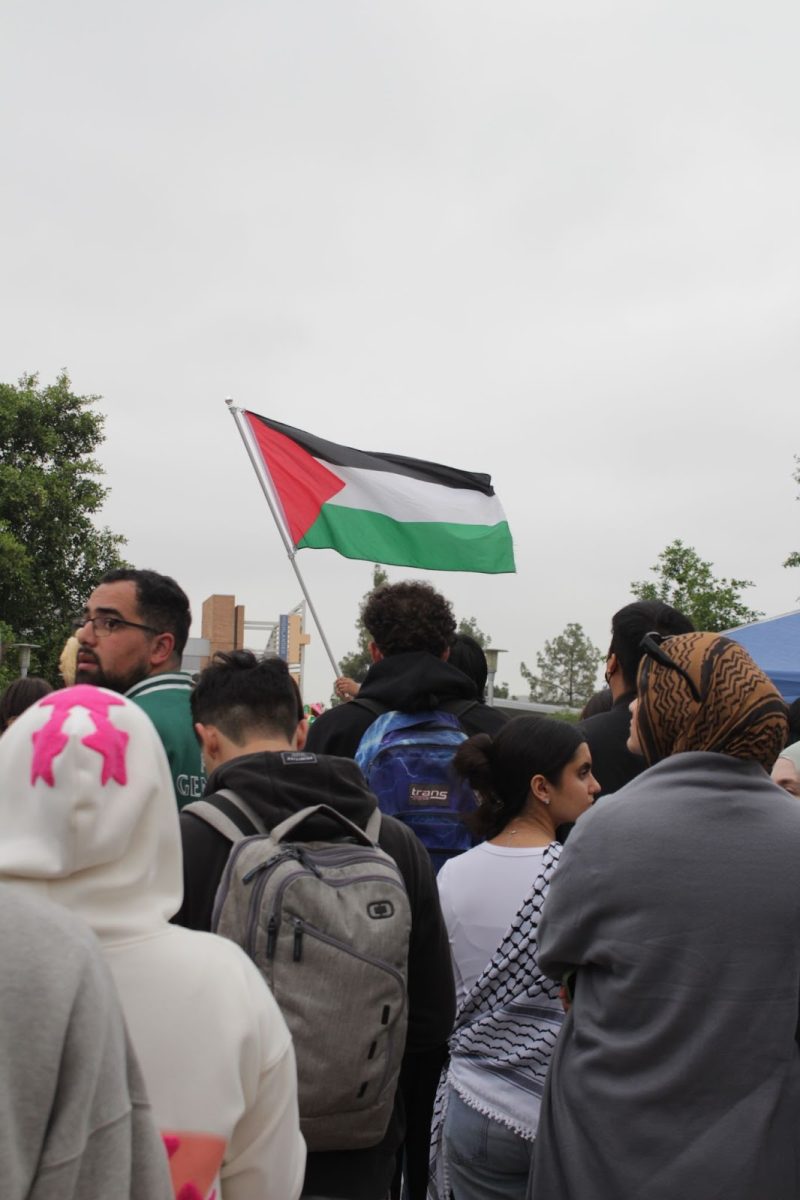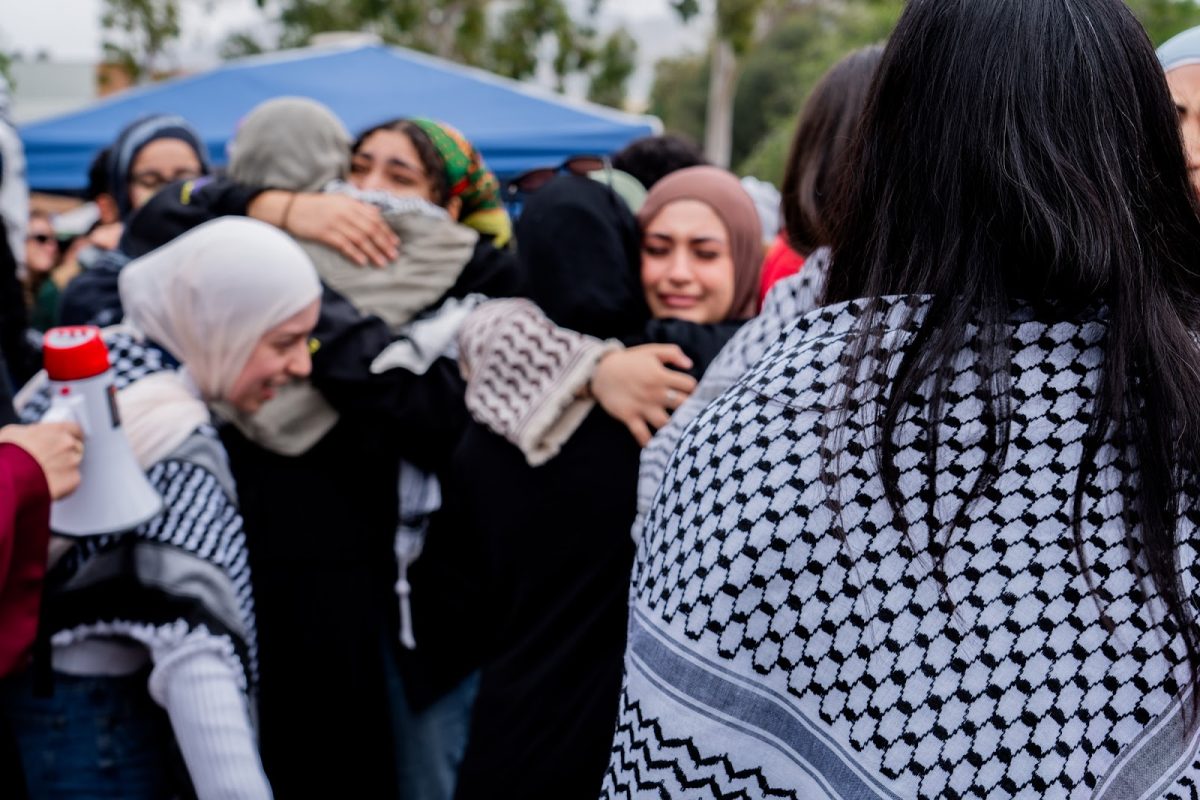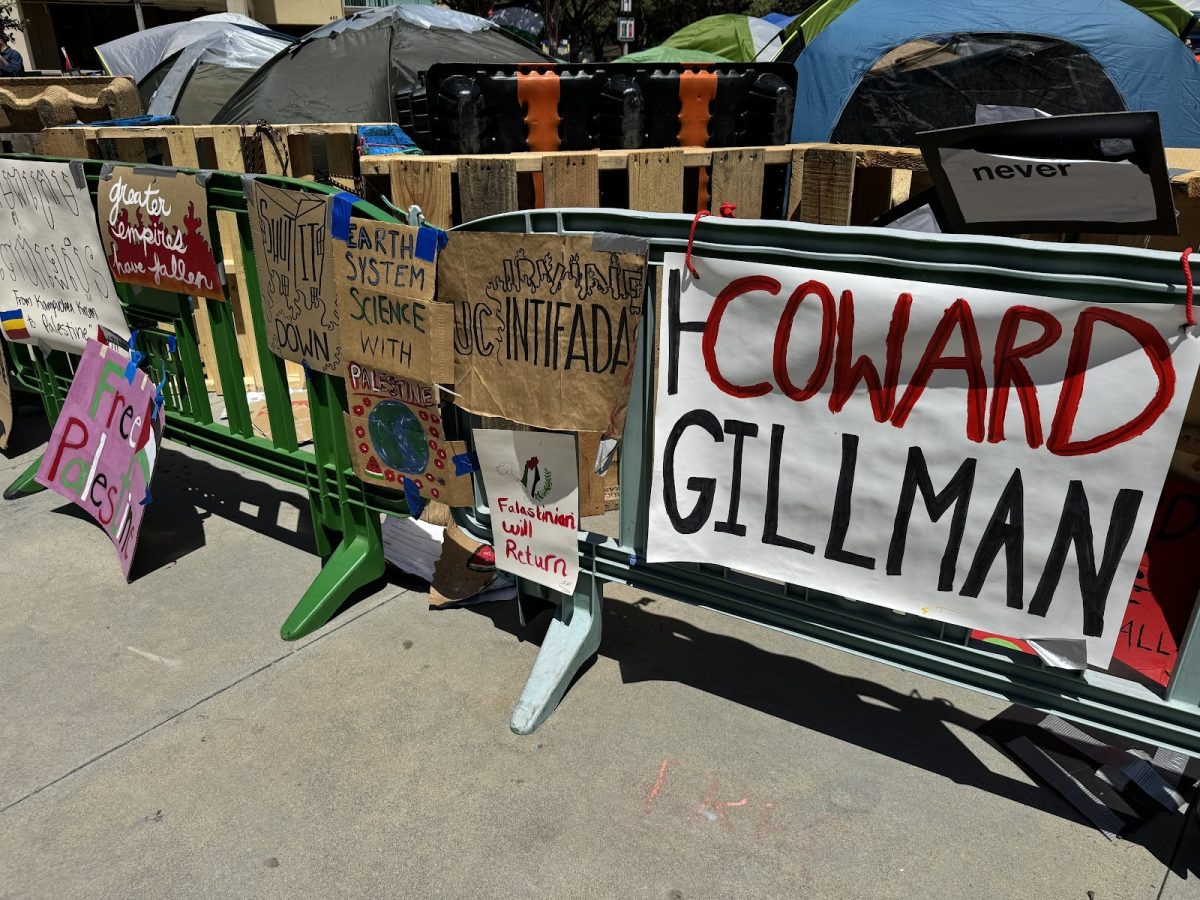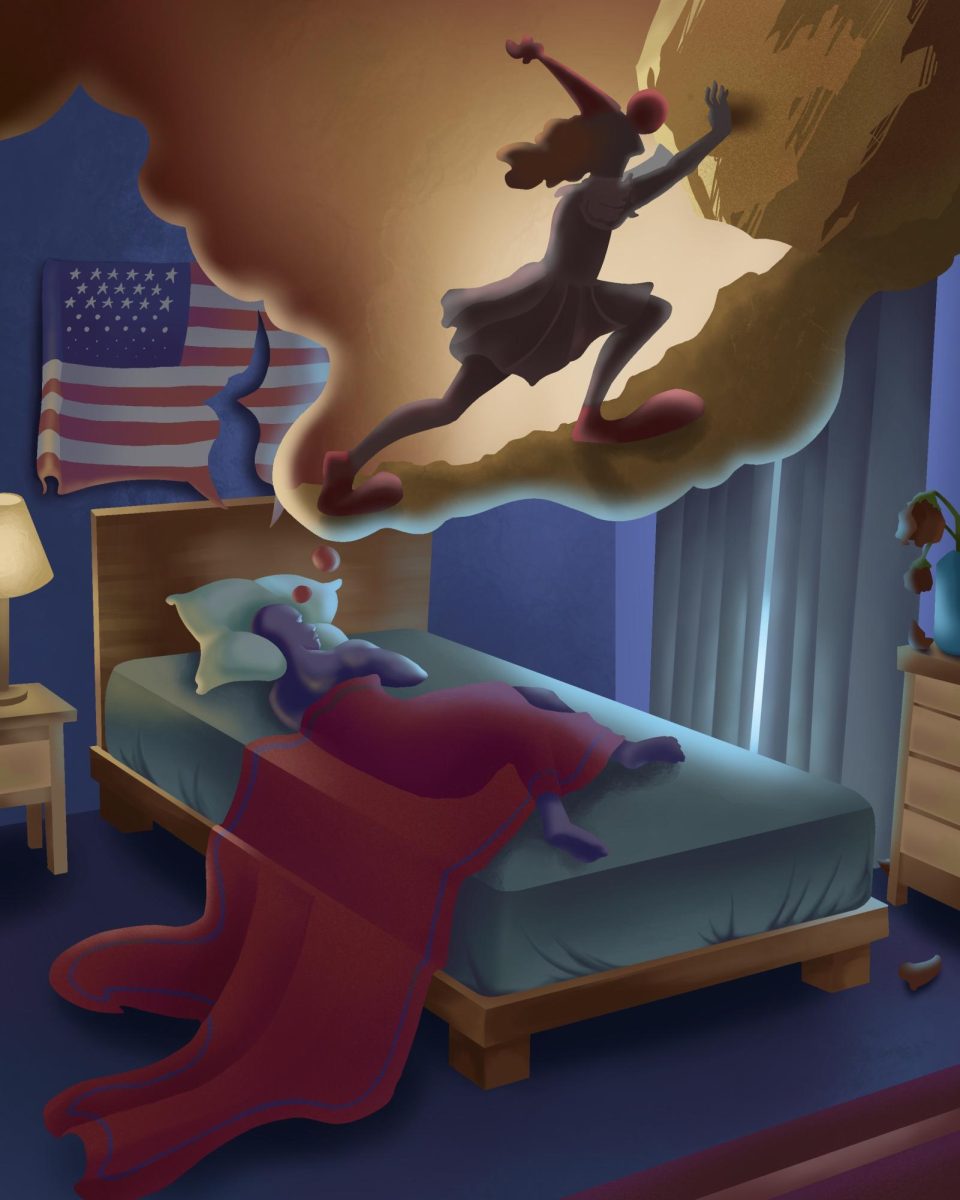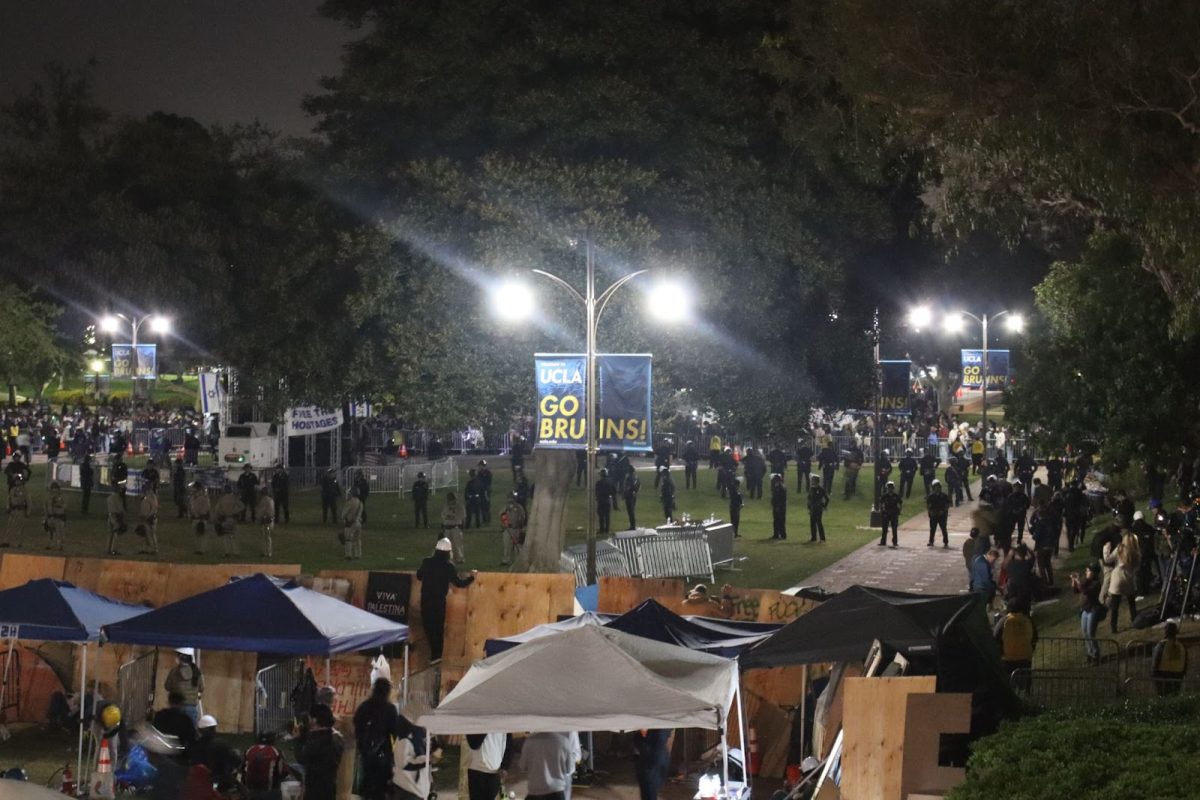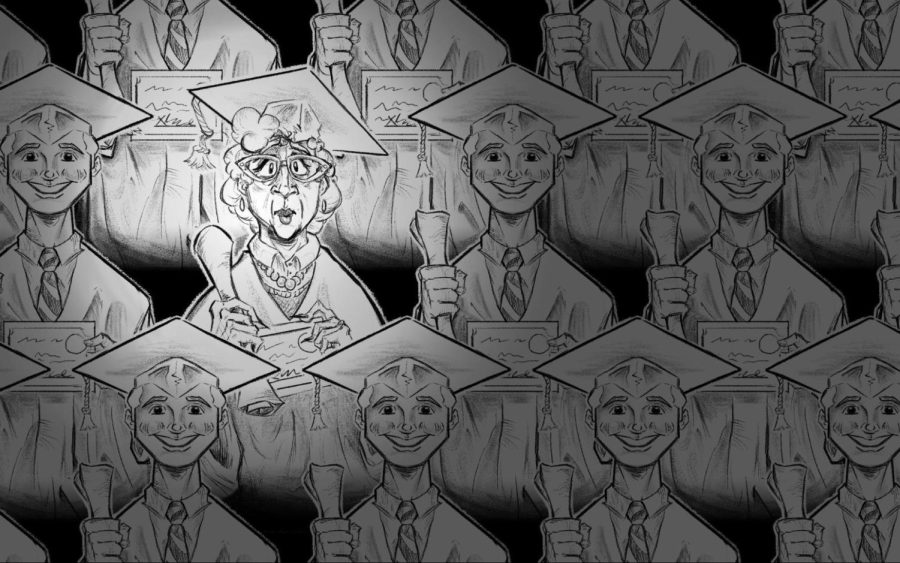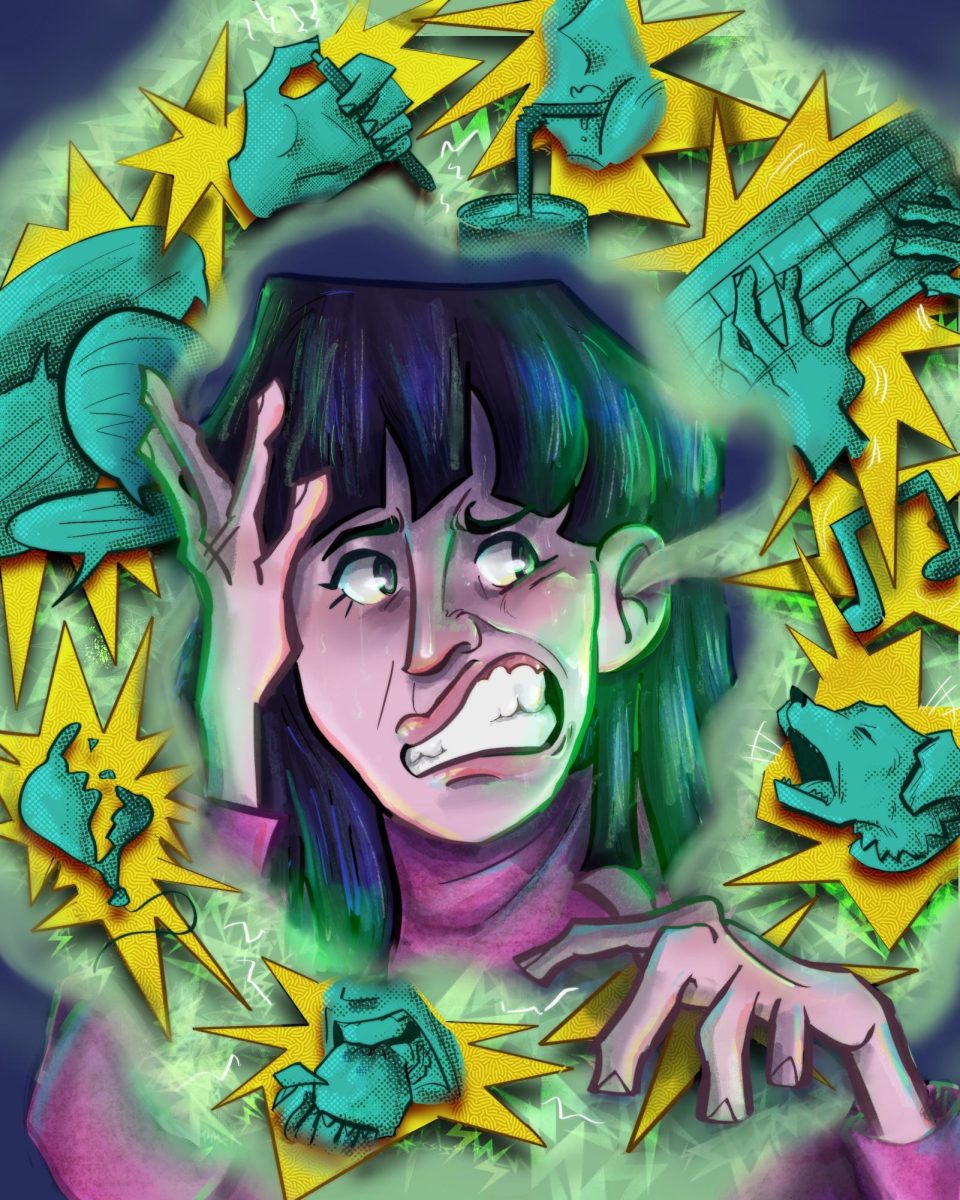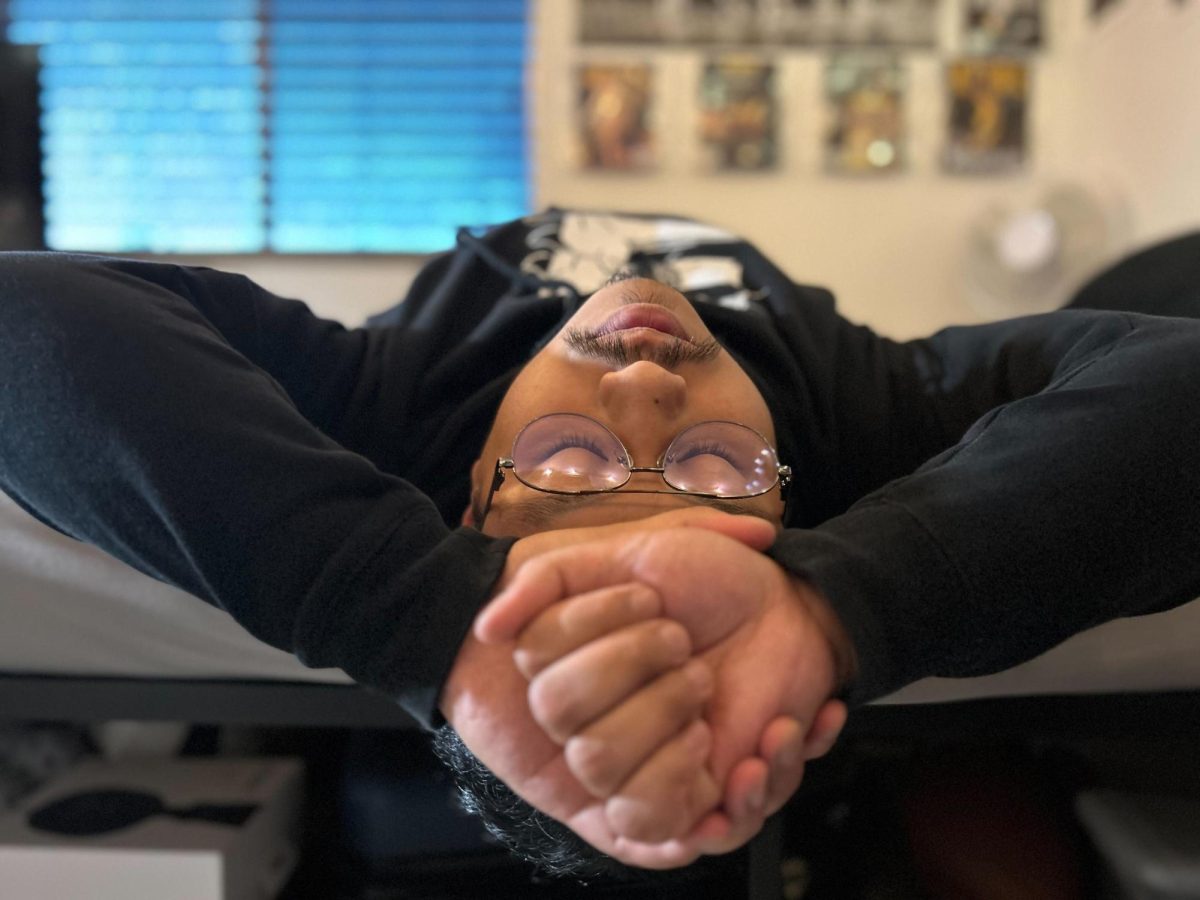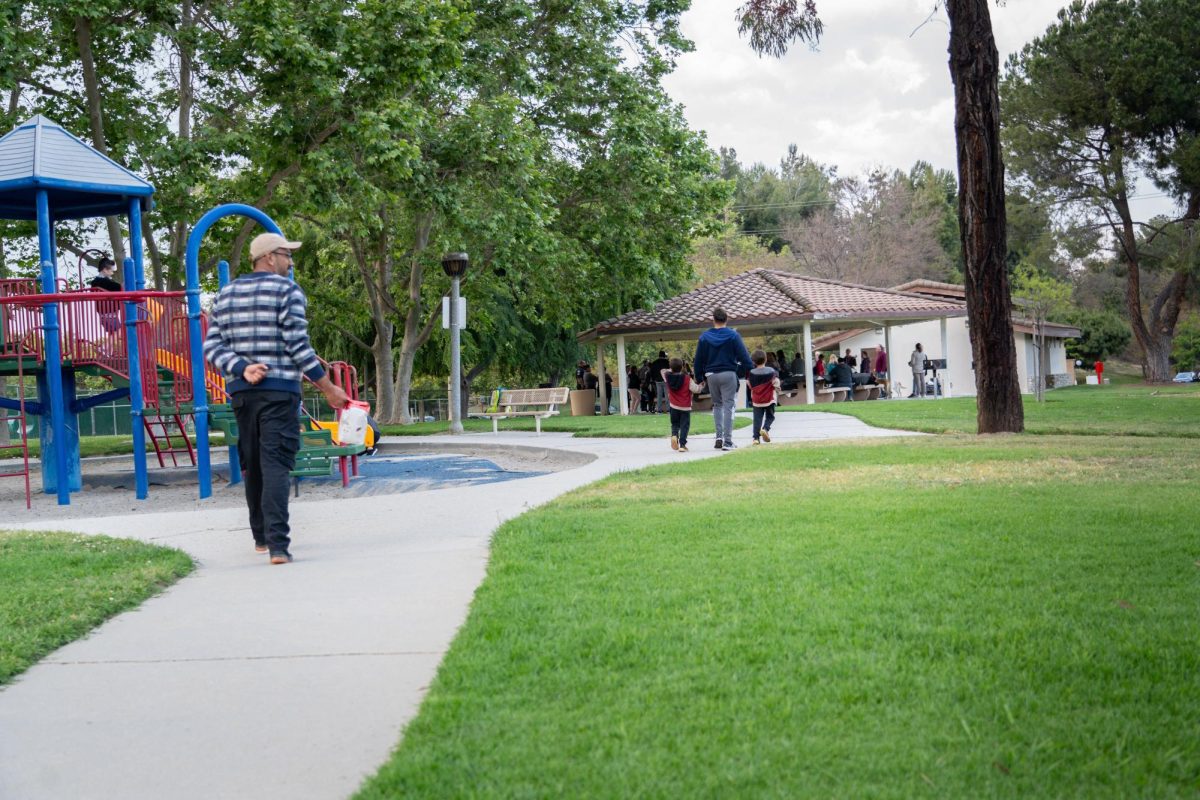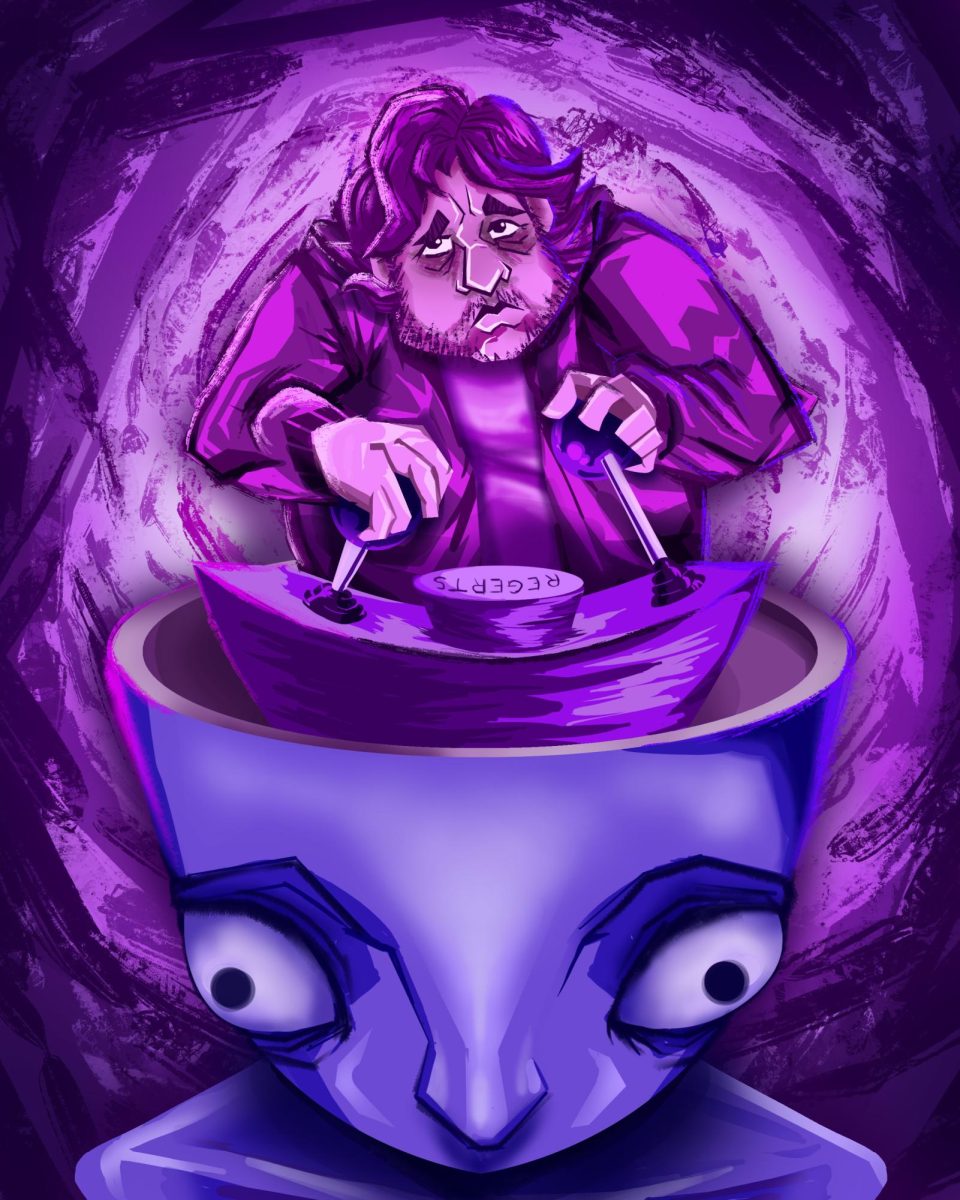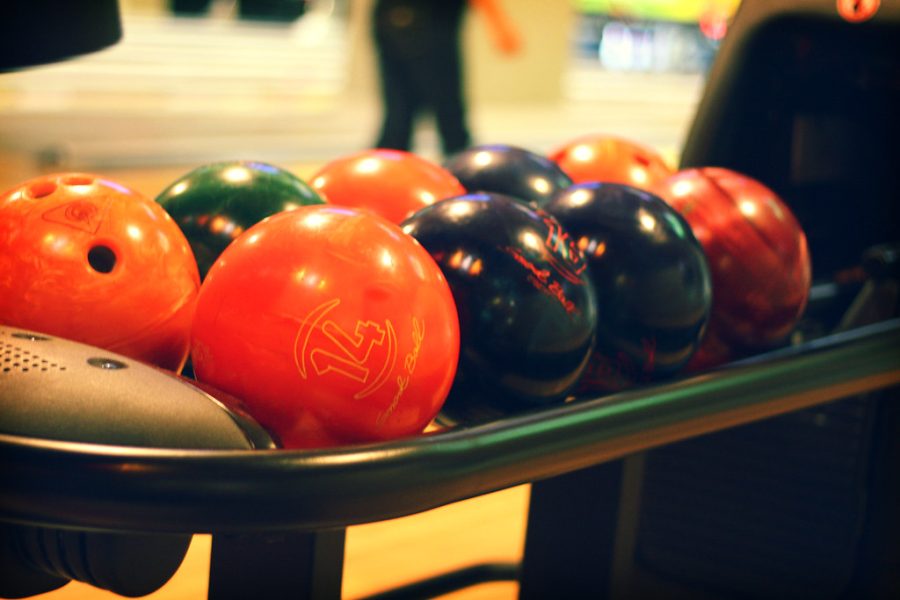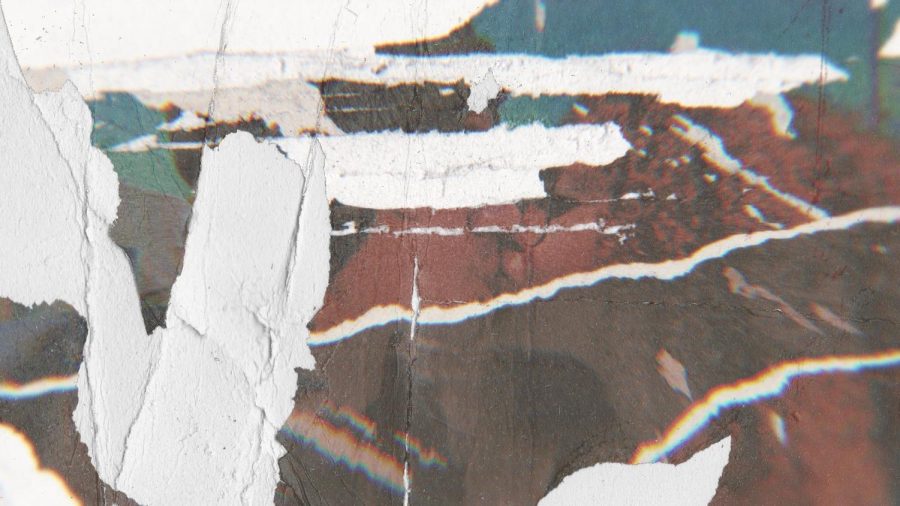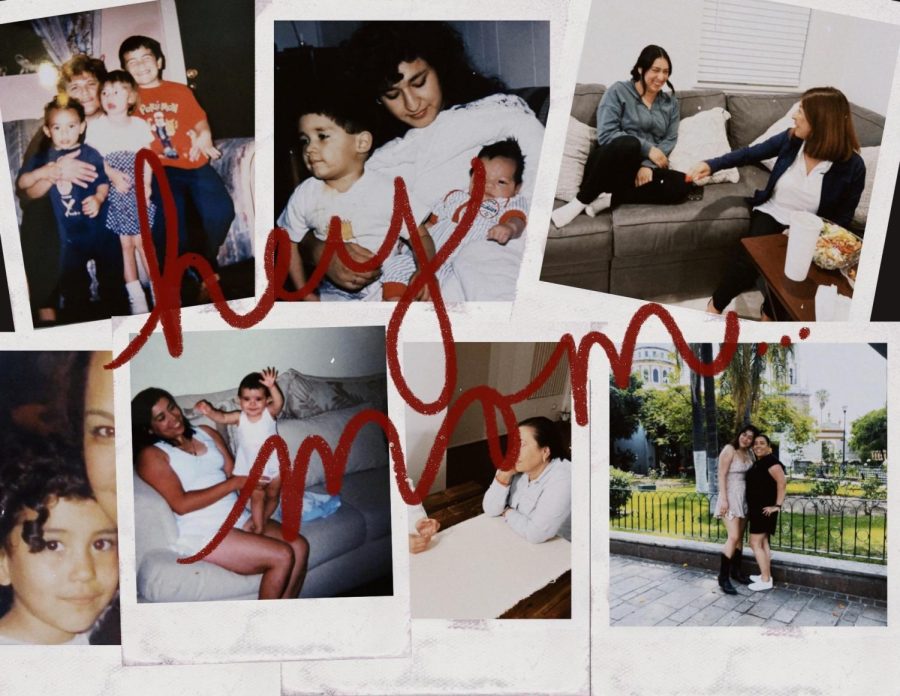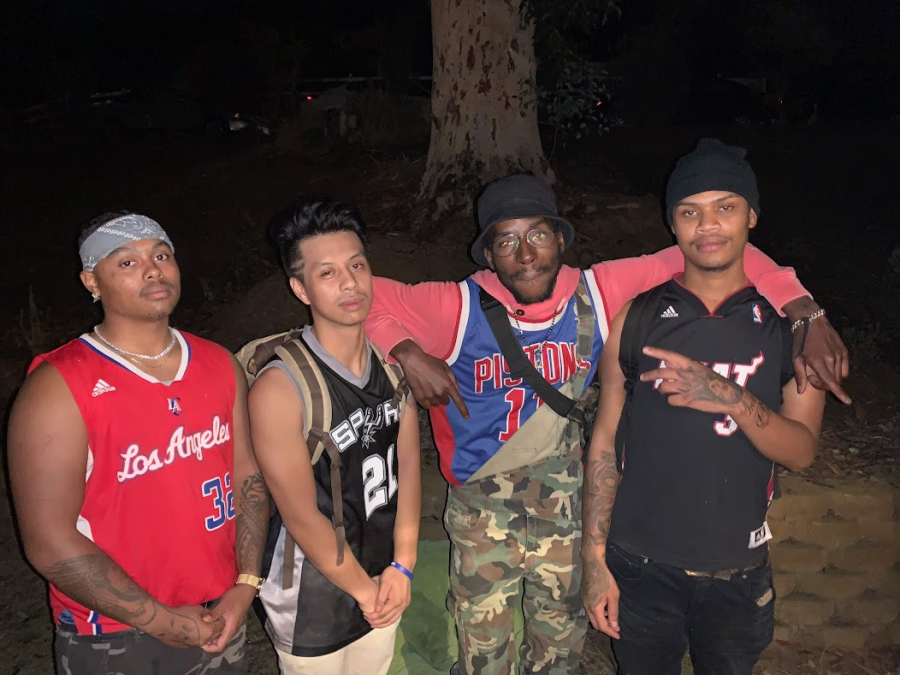On April 17, Columbia University students set up a Gaza Solidarity encampment to call their administration to divest from companies with ties to Israel. Six days later on April 23, 53 students attending the encampment were suspended and promptly evicted from their dorms. A photo of the student’s belongings on the floor outside the dorm building went viral.
After the Columbia encampment went viral days prior to the eviction, many other campuses followed suit, namely University of Texas and University of Southern California. On April 24, both UT’s and USC’s encampments had riot police deployed against them for criminal trespassing.
Two days worth of viral encampments being suppressed by college administrators and government officials lead many encampments to pop up around the nation. Then, on April 25, the UCLA encampment was attacked by counter-protesters using fireworks, injuring 15 people.
I was glued to my phone watching these events unfold. It was undeniable that these simultaneous encampments were historical, similar to the Vietnam protests in the ’60s. My peers felt the same way at our Tuesday pitch meeting, so we planned to cover the UCLA encampment on Friday, May 3.
UC Los Angeles
Our news editor Jacob Bertram decided to go early on Wednesday, May 1 and I followed, despite having a mountain of classwork to finish.
We arrived at UCLA at 7:07 p.m. to the deafening whirrings of the Fox News helicopter, flying above the campus. I remarked to Jacob that Fox News was disrupting student life far more than an encampment ever would.
Not knowing where the encampment was, we followed the Fox News helicopter that led us to a grassy field with about 20 LAPD police cars parked and thousands of protesters firmly planted onto Janss Step that lead to the encampment. Their chants drowned out the Fox News helicopter.
We came up to the only entrance of the encampment which was a narrow ramp that had yellow-vested protest organizers standing in front allowing people in. They let us in and gave us general rules for media coverage: No close-up photography of faces and no interviews.
The entrance led to the occupied Royce Hall renamed to “Intifada Hall” that was turned into an art gallery. There were posters and graffiti throughout the entire hall, with the doors of the hall blocked by plywood and tents as the LAPD was rumored to be inside the building.
The hall was filled with the scent of spray paint and plywood. Distant sounds of hammering echoed through the hall coming from the opposite end, where a barricade was being reinforced after last night’s attack on the encampment.
The art found in Intifada Hall:
All reachable surfaces were covered with a piece of art in Intifada Hall, from posters duct taped and spray painted graffiti on the walls, to painted messages and chalk pieces on the ground. Even mobile barricades had art pasted onto them.
As we walked outside Intifada Hall, Muslim protesters were partaking in Asr, a late-afternoon prayer. Anyone attempting to take pictures of them praying was blocked and reprimanded by organizers who were not participating in the prayer.
The encampment was busy; people were either hanging out, moving materials around, drawing, strategizing or doing homework.
Jacob and I walked to the opposite side of the encampment where there was construction scaffolding in front of the Powell library, likely from previous construction before the encampment was set in place. The stairs to walk up the scaffolding was accessible for everybody and had more art pasted around the plywood.
On top of the scaffolding, we got a birds-eye view of the entire encampment. There were thousands of protesters. Inside the encampment and both sides outside the encampment was filled with pro-palestine protesters chanting at UCLA to divest from arms manufacturers.
Some protesters who were not students came to support the UCLA encampment after counter-protesters attacked students with fireworks and mace the night prior. One organizer said that the encampment grew three times as large from the day prior.
Looking over the east barricade, there was a line of 30 idle LAPD officers sandwiched between another crowd of encampment supporters. In the line of police stood the $73,000 counter-protester stage that was placed on April 28.
The atmosphere chilled at 7:57 p.m.
The UCLA police department announced through the university’s PA system a disbursement order for everybody in the encampment “regardless of purpose” to leave. The announcement was followed by boos, then a sad trumpet sound, then laughter.
Immediately after the announcement, organizers with megaphones asked everyone who was not comfortable with being arrested to leave immediately. Other organizers told those that were staying to reinforce the barricade with more plywood and their bodies.
As the sun started to set, the protesters in the encampment were preparing for a second day of resisting another attack led by LAPD this time. violence.
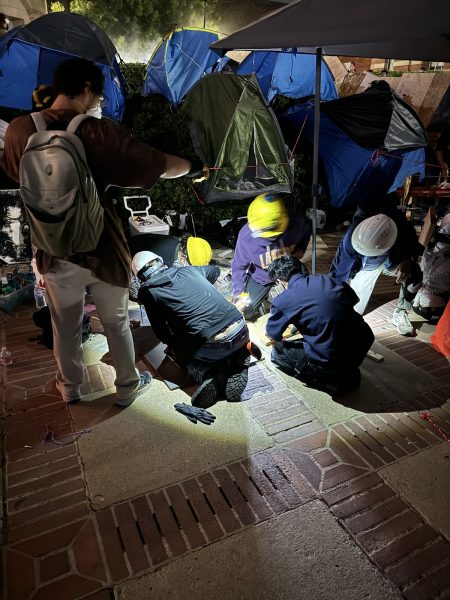
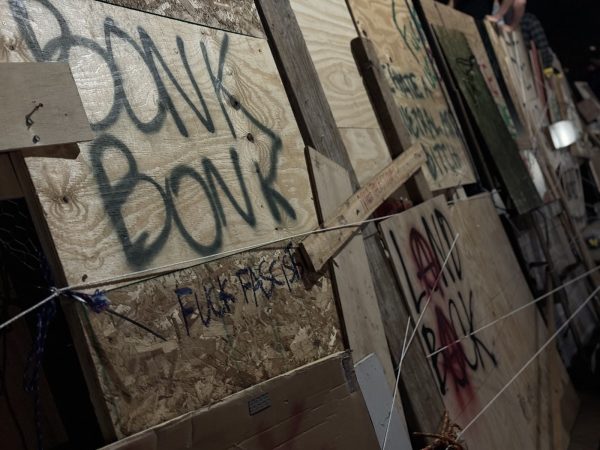
At 9:44 p.m., protesters chanted to LAPD while stationed next to the barricade
At the same time, encampment protesters started to shine flashlights at building roofs to find snipers, as there had been many sniper sightings in other campus protests recently. Snipers were identified on the second floor of Royce Hall, confirming the rumors that police were in that building.
UCLA encampment protesters taunting LAPD snipers
After around an hour of chanting and reinforcing the barricade with no movement from LAPD, protesters started to rest. As I sat below the scaffolding to edit a few articles, a young woman started to play the harmonica.
Rumors of an LAPD raid at 1 a.m. spread around the encampment after the Daily Bruin, UCLA’s student publication, tweeted a rumor.
A medic in the encampment said LAPD told medical staff in the area to be prepared by 1 a.m.
Daily Bruin staff do not have any further details at this time.— Daily Bruin (@dailybruin) May 2, 2024
At 11:45 p.m., organizers told the encampment with megaphones that it was “quiet hours” which meant no chanting to allow some to sleep. They also asked everyone to take shifts at the barricade so that the encampment does not burn out.
As the encampment quieted down, a local organization donated freshly cooked food to the encampment and passed out food to all at the food booth. A line formed to grab a meal that included barbecued chicken and rice.
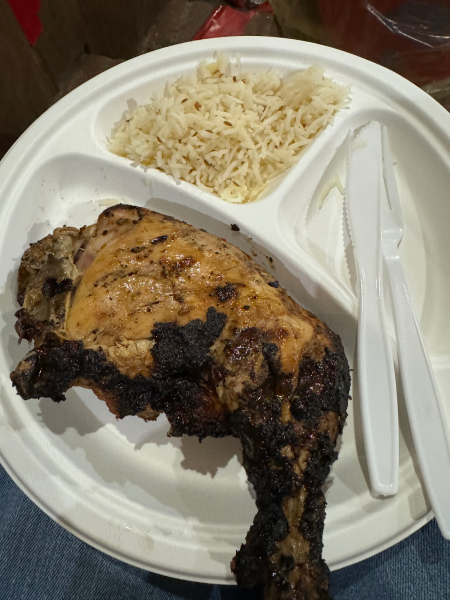
After encampment protesters finished eating dinner, some went to their tents to sleep. Others continued to keep an eye out through the barricade. As the snipers were still present, some continued to point flashlights at the snipers. The encampment was relatively quiet as everyone was collectively respecting the quiet hours set in place. But, at the back of everyone’s minds, the threat of a 1 a.m. raid loomed.
After the announcement, many combat-ready encampment protesters expecting tear gas ran to the east barricade with their ventilating masks and safety goggles. Chanting resumed; it was no longer quiet hours.
At 1:20 p.m., a loud boom rang through the encampment
LAPD marched into the encampment through the ramp entrance and formed a line with their backs against the Janss Step barricade. Encampment protesters rushed toward the LAPD into position with mobile barricades, storage bin lids, scrap metal sheets and large pieces of plywood. Some of the protesters wore gas masks, safety goggles and hard-hats
The LAPD formed a line of around 60 officers with batons pointed toward the protesters and a few officers behind the baton line with rubber bullet rifles. They did not wear any gas masks but had riot helmets on.
Behind the LAPD line and the Janss Step barricade were hundreds of pro-Palestine protesters that were chanting at the LAPD officers, but did not enter the encampment. The LAPD officers were surrounded on both sides.
After a few minutes, the encampment protesters were in formation with mobile barricades in the front, then a line behind the barricades with umbrellas and a third line behind the umbrellas of protesters linking arms to create a human wall to protect the encampment.
Meanwhile, there were around 50 protesters still stationed at the east barricade keeping watch and another 50 protesters barricading the Royce Hall entrances. Some believed that the Janss Step police line was a distraction from a raid from another direction because the police line was not advancing.
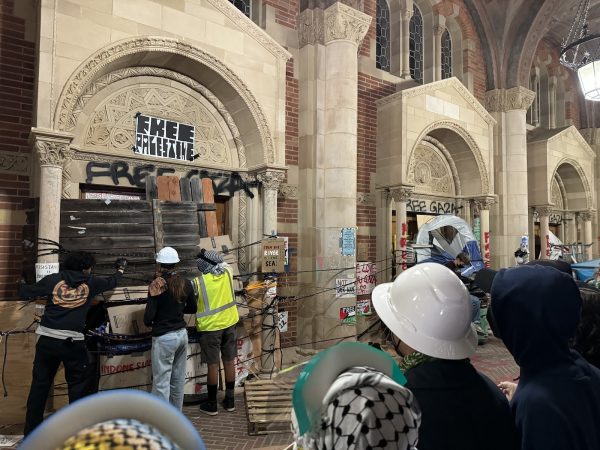
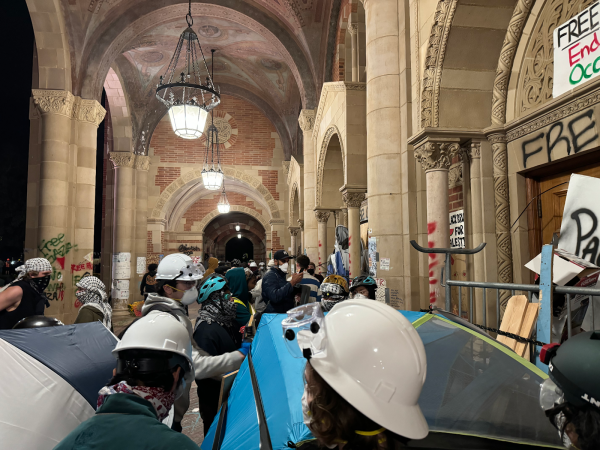
After 20 tense minutes of protesters chanting at LAPD officers near Janss step, the protesters slowly inched forward. Eventually, the LAPD line was backed into the Janss Step barricade and was forced to retreat through the protesters.
ABC7 helicopter coverage of protesters pushing out LAPD at 1:50 a.m.
Protesters cautiously celebrating after pushing out LAPD
After pushing out LAPD with an organized line for thein the first time intime since in Los Angeles since OccupyLA in 2011, encampment protesters celebrated, but were stillwerestill wary of the fact that there was too little police presence in that line to be a sweep.
The protesters on Janss Step chanted toward the officers as they did their walk-of-shame away from the encampment to regroup.
As we left the UCLA encampment and drove home at 2:51 a.m., Jacob and I noticed an LAPD bus and around 10 LAPD vehicles driving down the street. Around an hour after at 4:00 a.m., LAPD did a police sweep on the encampment using rubber bullets to disperse the encampment later at around 4 a.m.
UC Riverside
After the UCLA encampment was destroyed, I regrouped with my photographer peers, Jessica J. Johnson and Lauren Gamez to go to another encampment. They were not comfortable with going to a volatile environment like UCLA, so we shifted our sights to UC Riverside’s and UC Irvine’s encampment.
We decided to go to UC Riverside.
On May 3, we arrived at UCR on a cold, cloudy day with distant sounds of chanting and drums. As the Bell Tower came into our sight, it chimed 11 times. The tents from the Gaza Solidarity Encampment also came into our view with a Palestinian flag waving to the beat of the drums.
The UC Riverside Gaza Solidarity Encampment
The encampment was located around the central Bell Tower, which was is located in a large, open space that did not impede student movement. There were small barriers created with sticks, garbage bags and duct tape that blocked the sidewalk from immediate access to the encampment.
In front of the encampment was the large UCR monument covered in posters and stickers. The Bell Tower also had posters and painted slogans with the floor surrounding it covered in chalk with the same slogans.
Various slogans written near the Bell Tower
The encampment was organized by Students for Justice in Palestine UCR. The same morning, they posted on their Instagram that there would be “important negotiation announcements!!” with two exclamation points.
While the encampment was awaiting the negotiation announcements, the chant leader, slowly losing her voice, chanted for around 30 minutes with everybody gathered at the center of the encampment.
Protesters chanting in the middle of the encampment
During the chanting, I wandered around the encampment to explore what amenities were being provided. Unlike UCLA, the entrance of the encampment had a set of rules, including a rule that media should be directed to the check-in desk.
There was a variety of different amenities provided such as a food and water tent, a medicine tent and a library tent surrounded the Bell Tower. Next to these easy-ups was an area representing UCR faculty and Associated Students in support of the encampment.
As the chanting continued, the chant leader stopped the chant and told the encampment protesters that administrators were going to come to the encampment. She told the encampment to not boo them when they arrived because, “We like them today.”
At 11:30 a.m., the SJP negotiators with UCR administrators arrived at the encampment
Protesters gathered around UCR Chancellor Kim Wilcox, Vice Chancellor Elizabeth Watkins, Vice Chancellor for Student Affairs Brian Haynes, as well as UCR SJP President Samia Alkam.
“So I would like to announce after eight long hours of negotiations yesterday with Chancellor Wilcox … we decided that we have gotten to an agreement that robustly meets our demands which lead to the dissolution of this encampment today.”
Alkam’s speech after UCR agreed to Gaza Solidarity demands
After eight hours of discussion, Alkam and Wilcox seemed to show a mutual respect toward one another. The atmosphere between Alkam and Wilcox appeared light, laughing together and handing credit to one another during the speech.
The details of the contract signed can be found in my coverage on SAC Media.
After the speeches ended, one common interest connected the administration and negotiators: a peaceful resolution to the Gaza Solidarity encampment.
The now-dissoluted encampment disbanded, celebrated. On May 3, at 11:37 a.m., UC Riverside became the first UC to meet the demands of an encampment to peacefully dissolve a Gaza Solidarity encampment.
The UCR Gaza Solidarity Encampment celebrated
The dissoluted encampment meant that protesters were no longer needed to follow the encampment rules, so some were willing to talk to me on the record.
A group of three students, Pricsilla Munoz, Brooklynn Adelmann and Bradlee Herndon shared their immediate feelings after Alkam’s announcement. They said they all felt great, proud and accomplished. “I feel like this is setting the example for all of the other universities and their faculty and chancellors,” Adelmann said.
Local Riverside resident Mo, 41, came to the encampment with his wife and kid to support the students raising awareness to end genocide. “I love, really, how UCR has responded to all of it,” Mo said. “It’s really encouraging.”
The photographers and I left the encampment at 12:24 p.m. as the atmosphere died down. I was humbled to be in attendance at such a historical moment and rushed to put the news out.
After an eventful hour, the dissoluted encampment was silent
The encampment slowly dispersed while I started to draft the news article in the car.
The news spread through the internet via the SJP UCR Instagram, however commenters expressed disappointment with the negotiation terms because there were no official terms for divestment; it was instead a task force being created to explore divestment.
UC Irvine
Later, I decided to explore UC Irvine’s encampment with SAC Media Multimedia Editor Alex Ruiz on Monday, who had planned on covering an encampment to begin with.
On May 6, at around 1 p.m., Alex and I arrived at UC Irvine and paid $10 for only two hours of parking. LAPD wasn’t the only organization blocking coverage of student journalists, it was also Orange County’s overpriced parking system.
Despite the parking, it was a beautiful sunny day; Alex and I had a nice walk over to Rowland Hall, where UCI’s Gaza Solidarity Encampment was located.
UCI’s campus design was both simple, yet perplexing in execution. The main campus is a big circular pathway with a large park in the center of the campus. Lecture halls and buildings are adjacent to the circular path, so to disrupt movement, the encampment was set up on the pathway in the intersection of Rowland Hall, Reines Hall, Croul Hall and the Physical Sciences Lecture Hall.
On this intersection, the pathway opened up into a larger intersection so students were still able to walk around the encampment. No building entrances were blocked by the encampment either. There was a large poster that listed the encampment’s demands for UCI’s administration hung on the second floor of the Physical Sciences Lecture Hall.
We arrived at the encampment at 1:30 p.m. as Jewish Voices for Peace was set to speak. Immediately noticeable was the crowd around the protesters around the encampment as most of the people there were outside of the encampment instead of inside.
The UCI Gaza Solidarity Encampment
The encampment was around 80 feet in diameter, which was smaller than UC Riverside’s encampment. However, this encampment was also more fortified and defensive. The barricades were more durable, made with plastic traffic barricades and wooden pallets tied together with rope surrounding the entire perimeter of the encampment.
Since most of the protesters were outside, the posters were also outside posted on the front of the barricades.
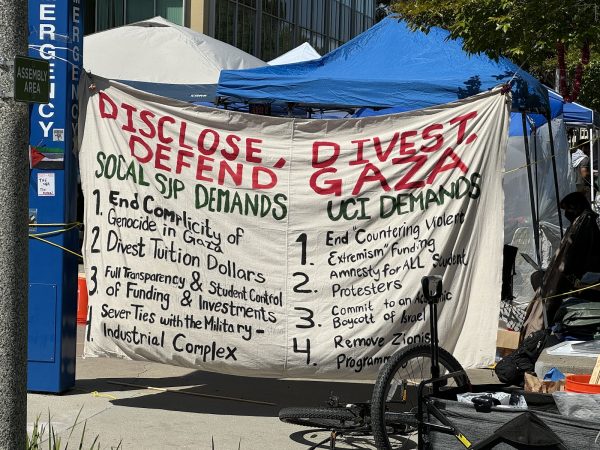
On the second floor of the Physical Sciences Lecture Hall, I could see a birds-eye view of the entire encampment. There were around 200 protesters outside of the encampment with another 100 people inside the encampment. Students not involved with the protest walked through the crowd without issue.
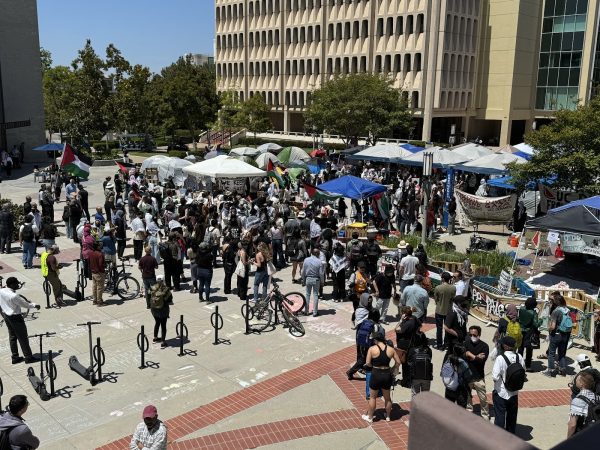
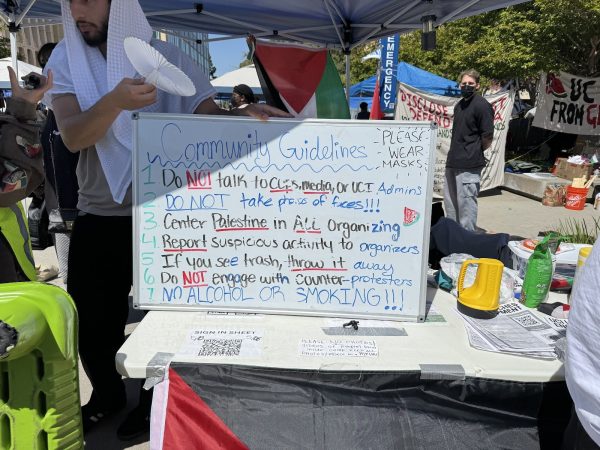
Familiar with the general organization for the Gaza Solidarity Encampments, I asked one of the yellow-vested organizers to call for the encampment’s media liaison. Shortly after, the UCI encampment liaison Sarah Khalil arrived for an interview.
Khalil said that the encampment was made in solidarity with Gaza because more than 40,000 Palestinians have been killed by Israel. The weapons Israel uses are from American weapons manufacturers such as Raytheon, Boeing and Lockheed Martin. UCs invest student tuition into these corporations so the encampment is calling for UCI to divest from these weapons manufacturers and reinvestment into the students and faculty at UCI.
When asked about their current negotiations with UCI, Khalil said that they were having more negotiations later that day. This current negotiation is a counter-proposal to UCI administration’s first proposal because the encampment did not agree with the administration’s proposal as it did not have any wording for immediate divestment.
Khalil’s thoughts on when the encampment will end
At 1:45 p.m. I heard a loud sound at the side of the encampment as a man with a small Israeli flag placed on the front pocket of his backpack attempted to dismantle a part of the encampment barricade. He said that a poster was hate speech and he wanted it taken down.
After a brief argument, a group of protesters gathered to stand in front of the barricade, blocking the man’s path toward the barricade.
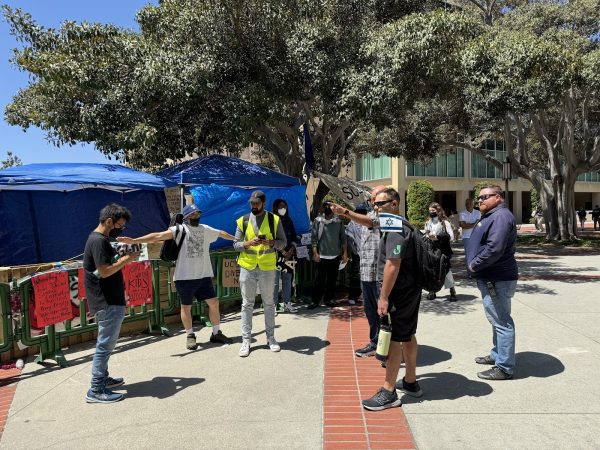
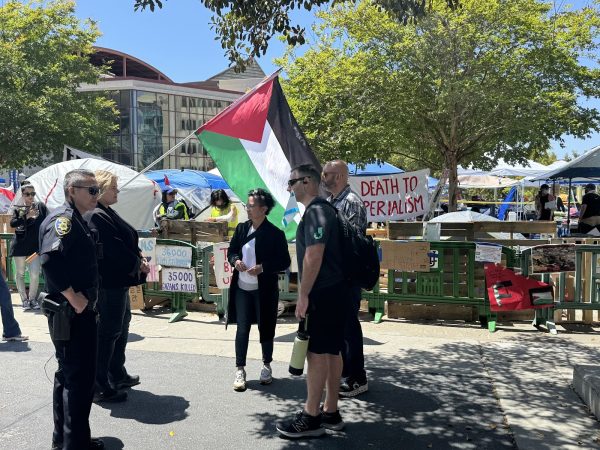
Then, the man walked up to a UCI Campus Police officer and told him that he was a student at UCI. He also added that the encampment was blocking his way to his class. He walked away in the opposite direction of where he pointed when the officer told him that there was nothing he could do.
After the exchange, the speaker inside the encampment told everyone not to engage with counter protesters
“We do not engage with counter protesters,” the speaker said. “We do not engage with counter protesters… There is no violence that we will do today that will make a difference in Gaza.”
The JVP speaker continued on with their speech and chanted.
Jewish Voices for Peace speaker leading a chant
Just outside the entrance, there were fruits and tortilla chips for anybody to take. When asked if we can go inside the encampment after introducing ourselves as media, the entrance guards cautiously did not allow us in.
At 2:03 p.m, five pro-Israel supporters arrived at the encampment. One of them was draped in an American flag and another held a flag with the American flag and Israeli flag combined. They stood at the front side of the encampment, behind the crowd but in sight of the speaker. The speaker did not mention the pro-Israel supporters, but a few pro-palestine protesters started to film them.
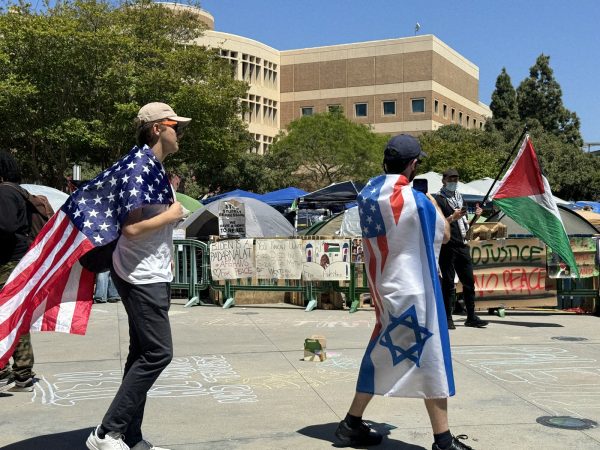
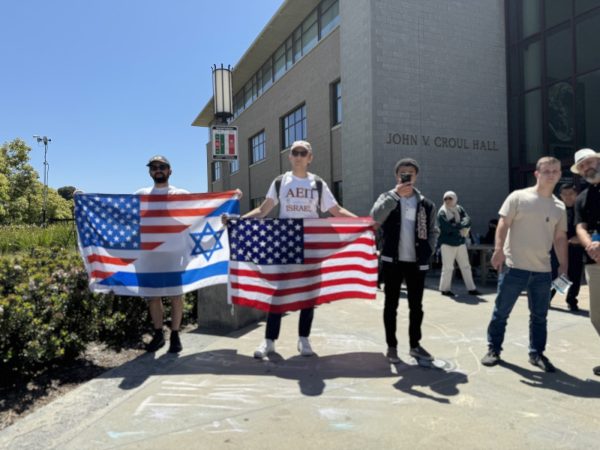
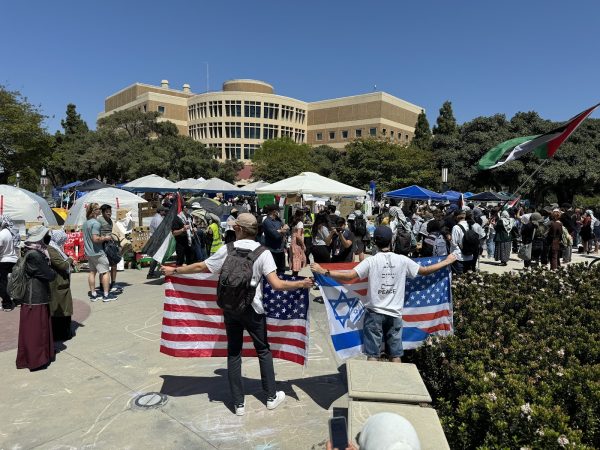
As they arrived, I asked them if I could get an interview with them, but were hesitant to go on the record. They stood for three minutes in front of the encampment without getting much attention from the pro-Palestine protesters, so they walked around the encampment to the back where they met with a rabbi that arrived a few minutes earlier.
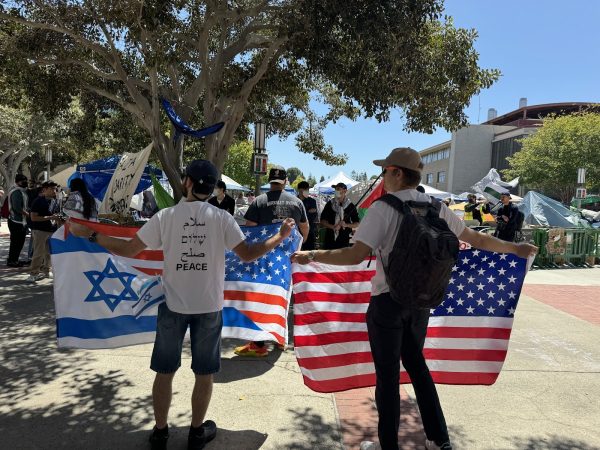
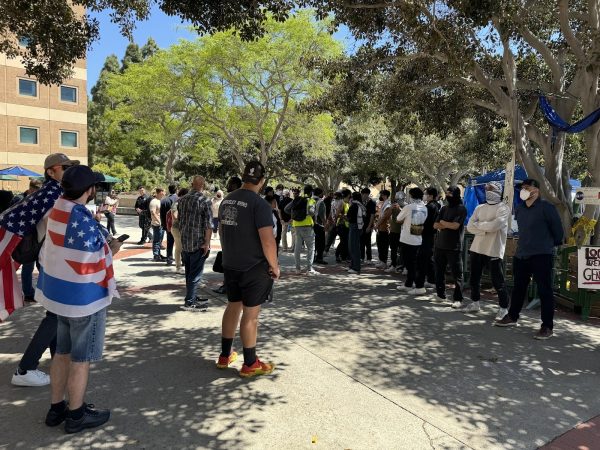
The pro-Israel supporters again proceeded to stand with their flags open at the back of the encampment. Some pro-Palestine protesters followed the pro-Israel supporters to the back as well and stood in between them and the encampment, forming a line. None of the groups were physically aggressive toward each other.
Once again, the speaker at the front of the encampment said, “We do not engage with counter protesters,” and directed all the pro-Palestine protesters back to the front of the encampment. Some followed the directive, while others stayed to keep watch.
Another 10 minutes passed and the pro-Israel supporters draped their flags on their backs and gathered with the rabbi to perform a daily Jewish prayer near the Gaza Solidarity Encampment. In an interview, with Shahar who withheld his last name, he said that the group was peacefully walking around the UCI park for Holocaust Remembrance Day.
While walking at the park, they heard the drums and chanting from the enchantment which offended them. Also, he claimed that people yelled Free Palestine at them and that they did not step near the encampment; these statements were factually untrue as I was there observing their actions from arrival to the interview. Nobody yelled at them and they did step near the encampment.
He also clarified that they were not counter protesters.
When asked why they were holding Israeli and American flags, he said that the Israeli flag had the Star of David on it, which is an important symbol for Jews. The American flag was held because they live in America.
So, by their account, they walked around the park for Holocaust Remembrance Day with American flags, heard chanting and drums from Aldrich Park and got offended, so they came to the encampment to pose with their flags.
After being lied to, a tarp was set behind the encampment for Muslim students to pray. They did their Dhuhr prayer and we left at 3:00 because our parking ticket was up.
The UCLA, UC Riverside and UC Irvine Gaza Solidarity Encampments were distinct in their levels of physical barricades, but were similar in more ways than different. They were all unified in their solidarity to Palestinians, readily pointing out Israel’s slaughter through the use of American-made bombs. Their central message was for their college to divest from weapons manufacturing and Israel.
Across all three encampments, dedicated art spaces reflected the protesters’ messages that they wanted to convey to administration and the world. Their messages ranged from critiquing their university administrators, pointing out the pointless bloodshed in Gaza or showing solidarity with Palestinians using their unique backgrounds.
Another notable similarity between all encampments were their community guidelines that emphasized centering Gaza in their organizing and limiting media interactions. Especially in UCLA’s larger encampment most people took measures to protect their identities by wearing masks and hiding their faces from cameras. This strategy to limit media interactions with individuals was a collective effort to ensure that the focus remained on Gaza rather than individual participants.
However, there were differences between UC Riverside and UC Irvine’s de-escalatory practices compared to UCLA. UC Riverside and UC Irvine’s encampments had written rules about de-escalation practices. Again, this is to focus the conversation on Gaza rather than focusing on aggressive behaviors from outside agitators toward the encampment.
UCLA did not have these practices; the practices that were taught were about protecting oneself from tear gas and other retaliatory weapons used to disperse protests rather than de-escalating. It was assumed that the encampment would be violently dispersed so there was no need for de-escalation.
The differences were also in the political climate in each area. UCLA has a huge community as it is in the center of Los Angeles with a strong police presence and a variety of different perspectives across the political spectrum. UC Riverside had a serene and peaceful community with a strong sense of collaboration and reaching across the aisle. UC Irvine was similar to UCLA’s climate, however there were less organized counter-protesters surrounding the encampment and the police presence was not as strong, but still feared.
The three encampments I visited were only a drop in the bucket to the over 100 Gaza Solidarity Encampments that have sprung up across the nation after Columbia University’s encampment. Each with their own communities, negotiators, art, barricades, media liaisons, community rules, conversations with administration, confrontations with counter protesters and police sweeps. Over 2,900 people have been arrested on college campuses around the country according to the New York Times.
When these encampments were not met with aggressive administrative action, like in UCLA, the encampment stayed peaceful. Before the announcement was made in UCLA, there was no violence that was happening. However, when a large number of police eventually invaded the encampment, protesters used force to push out police officers.
However, in UC Irvine, when a small number of outside agitators came to bother the encampment, the encampment remained peaceful. They used de-escalatory practices to remain a peaceful protest to demand for their administration to divest from arms manufacturers.
And when the administration takes the encampment’s demands seriously and follows through with it, the protesters are overjoyed to peacefully take down their encampment like in UC Riverside. These encampments across the country are largely peaceful and disciplined with a very clear objective; it embodies the unwavering commitment and compassion that protesters have toward the Palestinian people.

